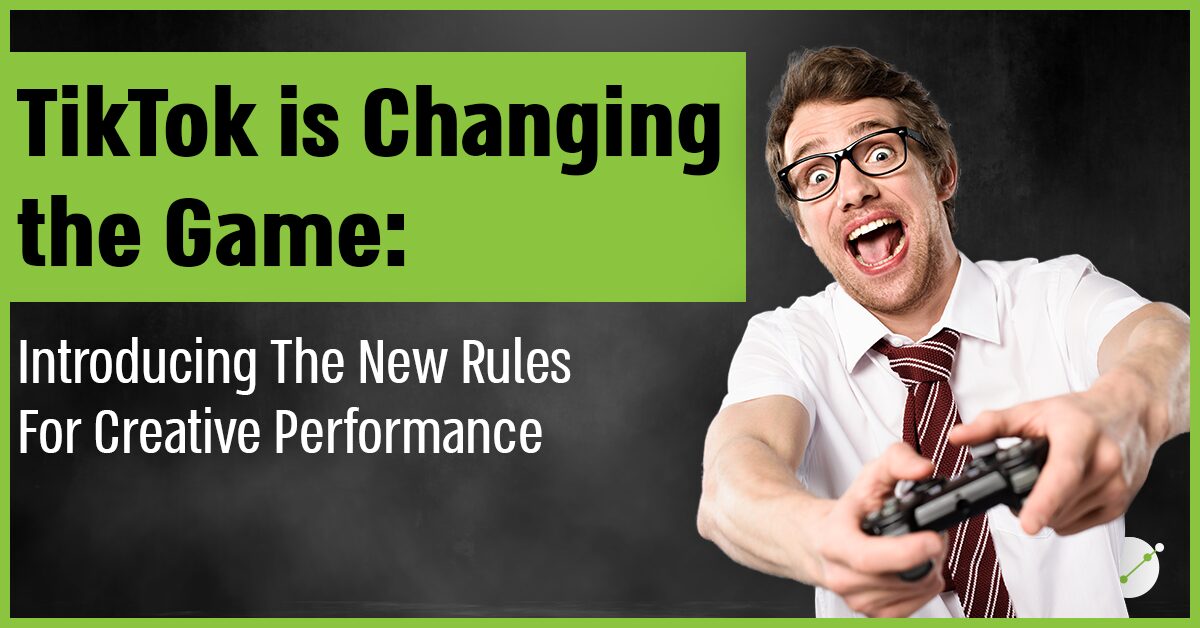We’re about to tell you something pretty weird. Something that might undermine the conventional perception which differentiates between Push marketing – which basically refers to content pushed in front of audiences, regardless of previous online searches – and Pull marketing – a strategy drawing the customer’s attention with ads related to brands they’ve been previously interested in.
Spoiler alert – this perceptual change requires changing the way we approach planning a campaign, and it emphasizes more than ever how thorough research and accurate creative is the most important component. Way more important than advanced targeting manipulations, but we’ll get to that.
So what do we really know about Pull vs. Push marketing?
The main distinction between the two is regarding the customer’s starting point. “Pull” marketing essentially meets existing demands, wherever they are. The consumer is looking for the product or solution, we just make sure we’re at the right place and time to present an attractive offer.
“Push” marketing, on the other hand, is more complex and challenging, as it is “pushed” in the potential customer’s face based on certain assumptions about their needs, personal status and especially his suitability for the product. “Push” marketing is usually disruptive as it appears when the customers least expect it, trying to lure them in and drop whatever they’re doing for an advertisement.
Thus the basic relationship between “Push” and “Pull” is one where push marketing generates the “fruit” of demand that pull marketing eventually reaps.
Now here’s where it gets interesting.
We all know that, except for Google (which is a tool designed to help you find exactly what you’re looking for) most of the tools available to us advertisers are Push marketing tools.
Even Facebook, which is our main marketing platform nowadays, is still targeting audiences based on characteristics such as demographics, personal interests and browsing patterns, and not according to previous online searches.
So we end up constantly looking for signals that indicate the customer’s intentions, in order to advertise to them.
Well, here comes the surprise.
Is it possible that Facebook advertising is more PULL than we originally thought?
When looking into advertising patterns on our Facebook feed, especially at times when we are looking to purchase something, whether it’s a cell phone, a new car, furniture or even dog food, something interesting happens.
our Facebook feed is miraculously filled with tons of relevant suggestions from a variety of advertisers, whenever we’re actively searching for a product or comparing prices online.
Anyone who advertises on Facebook already knows this – targeting isn’t tailor made for most of what we’re selling. More often than not, there’s no defined target market to aim at; you can’t target “people who are interested in buying capsules for their coffee Machine” or “people who need new socks”. So how does the “big blue” algorithm still come up with the right ad for the right person?
Now all you conspiracy buffs will probably claim that Facebook is spying on all of us. Possibly, but we believe that there is a more interesting answer.
In this day and age, Facebook is by far the largest advertising platform on the planet. FB pixel is implemented into practically every website or app you could think of. Which means that Facebook knows you much better than you think.
Once the algorithm notices you’ve visited 2-3 sites of the same type, like websites of car agencies for example, it easily concludes that you are considering purchasing a new car. At this point it won’t be too long before you’ll come across a Facebook ad promoting a new car.
You can call it hybrid advertising – a combination of push and pull marketing.
On the one hand, the advertising is essentially push: If I’d been browsing through Mazda’s website and later came across some Subaru or Suzuki ads, it means I did not get exactly what I was looking for, right? I mean, I did not expect it or asked for it. On the other hand, I was looking for a new vehicle, and in that sense, by presenting me with various suggestions, these ads do match what I’m currently looking for.
If you’re still sceptical, you should conduct your own experiment:
Try searching for anything within a competitive market – a car, a smartphone, real estate, mortgage advice or an institution, browse through some sites and spend a few minutes there, just like a customer looking for a product would. within an hour (give or take) your FB feed will be filled with all types of ads related to what you’ve been looking for.
This whole story is summed up with two main conclusions:
#1 The algorithm is smart. It knows how to match ads with relevant audiences, even without extremely sophisticated targeting. Data keeps collecting, making relevant ads appear to those searching for a specific or similar product, or even just expressing some interest in it, according to their browsing Patterns.
#2 There are less hoops to jump through for technicalities when targeting. This is prominent in many campaigns, when much better results are achieved through broad targeting, more than meticulous and narrow targeting.
Competition is now stronger than ever.
Even when we do remarketing ads and set our sights on a “hot” audience, we should keep in mind that this audience will be also exposed, almost immediately, to all our competitors as well. Meaning, the ability to isolate our own quality target audience is diminishing.
At this point you must be asking yourself: What can be done with this information, then?
First and foremost – Trust The Algorithm. Now, more than ever. Facebook’s advertising system knows exactly where to find a demand for your product, it knows just who needs to see what, even with the minimum of targeting settings.
But the bigger issue you need to consider and take into account is the importance of quality raw material: strong copywriting and exquisite creative.
If I’m advertising a product or service, a smartphone for instance, I must keep in mind that a customer currently looking to buy a new cell phone is going to be exposed to just about every other advertiser who sells it.
As competition for the consumer’s attention becomes more and more aggressive, anything that doesn’t stand out creatively – pretty much goes down the drain.
This has always been the key: strong copy and high quality creative are the main factors – not only when it comes to new or “cold” audiences, but also in remarketing. We’re not alone, that’s the reason we have to be innovative and keep reinventing ourselves. Otherwise it’s a lost cause – we’ll be lost in a sea of other ads.
And the point is? Now is the time to think DIRECT RESPONSE. This term is highly important and we will be getting back to it soon enough. The amazing correlation between ads and people scrolling on the other side, is the reason why Facebook gets us such accurate-direct conversions.
Here are some Pro Tips, to help you score some quality direct-response.
If you’re reading this, and some (or all) of what I’ve been talking about sounds trivial to you – bravo! it means you’re probably at a good place in terms of marketing, writing and creative abilities.
and to those who feel like you can still improve your creative skills, start implementing:
#1 Invest yourselves in copywriting
Sounds obvious? You will be surprised.
Powerful and precise copywriting, one that addresses the customer’s pain points and desires, could sell the most mediocre product. Even the best product with the greatest value proposition, would probably not sell if you’re using a banal wishy-washy advertisement. As a rull, choose quality over quantity: Good writing isn’t measured by the amount of words, number of characters, clever line breaks and other hacks. Good writing is measured by the way it suits the target audience, by its ability to make people relate to it and keep them engaged in reading. It could sometimes take a whole day to create a single Facebook ad that perfectly hits the spot.
#2 Invest yourselves in customer-centric copywriting
Further to my previous point: Stop thinking about YOU or the PRODUCT you’re selling and its incredible features. Stop thinking about your competitors or trying to win some price war.
Your greatest challenge is getting the customer to think that you’re not trying to sell them anything – you are trying to fix a problem for them. Many businesses think that with a huge discount or crazy deal they would beat the competition, whereas in reality the customer needs one simple thing: a compelling solution to their need, problem, pain or desire. People need answers to whatever is on their minds; like renovating the house, buying a new fridge, or surprising the wife on her upcoming birthday.
I’ll go as far as saying that in many cases price doesn’t even play a role for the customer – it’s the reassurance that the product is going to finally fix their issue.
How do you get to that? This leads me to the next point.
#3 Put yourselves in the end consumer’s shoes
Think carefully: what do they want to know? What do they need to hear? Which part of your value proposition will capture their attention? What is the one thing you can promise, that they need most and will press their buttons?
One specific word could sometimes make a greater impact than an entire speech.
#4 The visual part is just as important as the writing
What can you show that will make the consumers drop whatever they’re doing and pay attention to your product? So many businesses spend a great amount of money on designed and branded banners when, in fact, a stock image or packshot will sometimes do a better job, simply because they’re simple and authentic.
Finding the middle ground between a worn-out boring image and an overly done and too “sales-y” image that will be ignored due to banner blindness, is no simple matter.
Anyone can just go with the first image that comes up on shutter-stock, and that’s probably what most people do.
How to find that sweet spot? By constantly researching, putting a lot of thought into choosing the right visuals, and always reinventing yourself to make sure you’re not getting trapped in the pattern.
#5 Test. Everything. Always.
And I’m not even talking about split-testing, A/B testing, or anything of that sort.
I’m talking about trying different things, using common sense to choose wisely every word you write, every image you use, every title and every creative choice you make.
Be dynamic and don’t fall into the pattern, always be open to changes and try new things. Yesterday’s approach might not apply to today, and unless you frequently question things, you’ll end up stuck and repeating yourself.
In conclusion – it’s essential to understand that the platforms are becoming smarter and more sophisticated as time goes by. Facebook, Google and their likes, are dynamic and ever-changing, and every day someone comes up with a new feature or idea. This means we must never become fixated and stuck on our habits, because both the advertising platforms and the customers’ habits are neither static nor permanent – they change all the time.
Although marketing platforms are continuing to change, be updated and refreshed, the basic principles of advertising and copywriting are universal and timeless, and those who master them will probably continue to take the lead.





